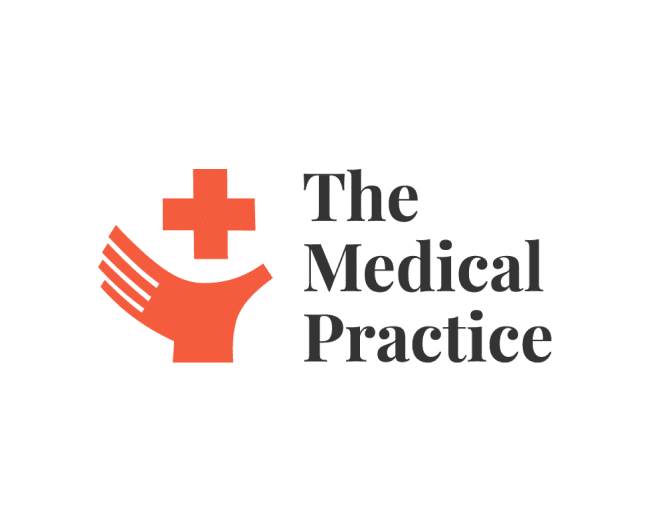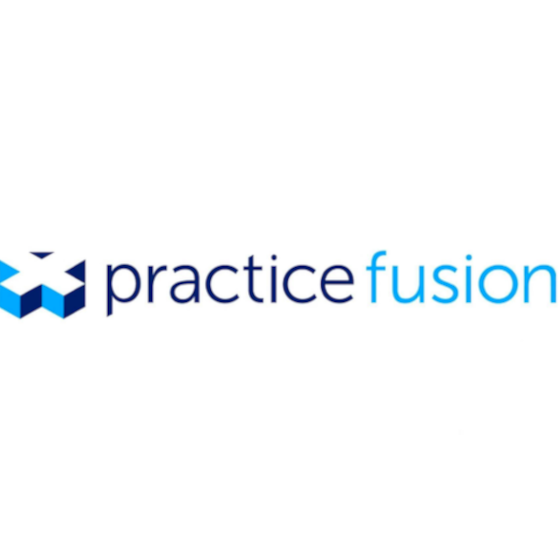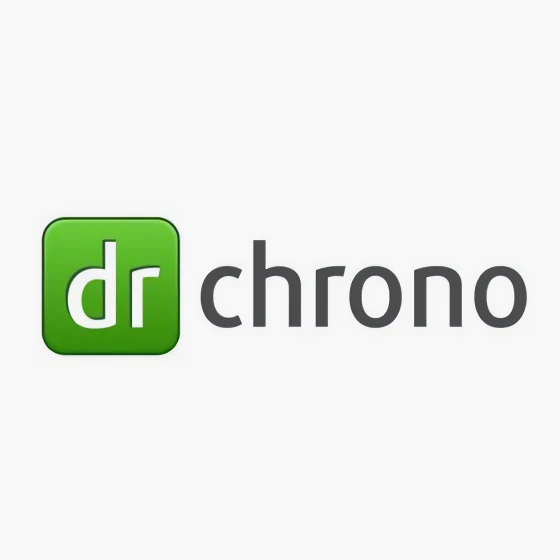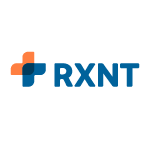10 Best Anesthesia EMR Shortlist
Here's my pick of the 10 best software from the 15 tools reviewed.
Our one-on-one guidance will help you find the perfect fit.
Anesthesia EMR software enables real-time monitoring and dosage tracking, which frees up your team to focus on optimizing perioperative patient care. Ensuring accurate documentation during procedures can be challenging, but the proper support can minimize risks and improve compliance.
In this article, I compare and review the best anesthesia EMR software tools to support your buying decision.
Why Trust Our Software Reviews
We’ve been testing and reviewing medical practice software since 2023. As medical practice technology researchers ourselves, we know how critical and difficult it is to make the right decision when selecting software. We invest in deep research to help our audience make better software purchasing decisions.
We’ve tested more than 2,000 tools for different medical practice use cases and written over 1,000 comprehensive software reviews. Learn how we stay transparent & check out our software review methodology.
Best Anesthesia EMR Summary
| Tool | Best For | Trial Info | Price | ||
|---|---|---|---|---|---|
| 1 | Best for AI-driven documentation | Free demo available | Pricing upon request | Website | |
| 2 | Best for simplified documentation | Free demo available | Pricing upon request | Website | |
| 3 | Best for physical therapy practices, a standout in specialty care | Not available | From $3/user/month (billed annually) | Website | |
| 4 | Best for adherence to robust patient-centric care | Not available | From $149/user/month (billed annually) | Website | |
| 5 | Best for its exceptional telehealth capabilities | Free demo available | From $429/user/month (billed annually) | Website | |
| 6 | Best for its top-tier cloud-based infrastructure | Not available | From $449/user/month | Website | |
| 7 | Best for its remarkable iPad and iPhone integration | Free demo available | From $199/user/month (billed annually) | Website | |
| 8 | Best for comprehensive practice management solutions | Not available | Pricing upon request | Website | |
| 9 | Best for specialized modules | Not available | Pricing upon request | Website | |
| 10 | Best for specialized anesthesia workflow optimization | Not available | Pricing upon request | Website |
Best Anesthesia EMR Reviews
NextGen is a healthcare IT platform that delivers electronic health records and practice management solutions tailored to a variety of specialties, including anesthesia. Its standout tools include mobile access, AI-powered note capture, and built-in analytics to support both clinical and financial operations.
Why I Picked NextGen: NextGen stood out to me for its AI-powered Ambient Assist tool, which turns doctor-patient conversations into structured SOAP notes—helping anesthesiologists reduce documentation time significantly. I also liked its specialty-focused flexibility, which includes configurable billing workflows and mobile access that supports providers inside and outside the OR.
Standout Features and Integrations:
NextGen offers AI-powered documentation, a mobile EHR, anesthesia billing tools, and regulatory reporting. Its platform supports over 40 specialties with customizable templates and real-time data access. Integrations include CGM LABDAQ, Klara, DoctorConnect, Medsender, FrameworkLTC, and others covering labs, communication, and billing systems.
Pros and cons
Pros:
- Supports over 40 specialties, including surgical and anesthesia settings
- Strong interoperability with labs and third-party systems
- Mobile EHR access allows anesthesiologists to manage tasks on the go
Cons:
- Some features are iOS-optimized; Android support varies
- May require integration with third-party anesthesia AIMS
Athena Health is a provider of cloud-based healthcare solutions designed to enhance clinical effectiveness, patient experience, and financial performance. The company's flagship platform, athenaOne, integrates Electronic Health Records (EHR), Revenue Cycle Management (RCM), and patient engagement tools to consolidate operations.
Why I Picked Athenahealth:
In my comparison of various systems, Athenahealth emerged as a leader in providing an integrated healthcare experience. Its core strength is its seamless integration of key practice operations, from clinical records to patient engagement and revenue cycle management. I also like that Athenahealth offers simplified documentation processes to allow health professionals, like anesthesiologists, to view and manage patient profiles easily.
Standout Features & Integrations:
Athenahealth offers a plethora of useful features, such as revenue cycle management, communication and care tools for patient engagement, an easy-to-read summary of patient records, a patient portal, automated reminders, telehealth capabilities, and mobile accessibility. Integrations include NextPatient, DocResponse, Yosi Health, Secondwave, Recovery Plus, TSI, VaxCare, Fullscript, QueueDr, and CallMyDoc.
Pros and cons
Pros:
- Cloud-based system for remote access
- Robust patient engagement tools
- Broad range of integrations with other healthcare systems and devices
Cons:
- Data migration can be time-consuming
- Complexity of the system may result in a learning curve
WebPT
Best for physical therapy practices, a standout in specialty care
WebPT is a medical practice management software specifically catering to physical therapy clinics. Features tailored to this field allow more effective and efficient patient care and practice management.
Why I Picked WebPT:
In my selection process, WebPT stood out for its focused approach to physical therapy management. Rather than attempting to cover all areas of healthcare, it specializes in one niche, resulting in a tool that truly meets the needs of physical therapy practices.
Standout Features and Integrations:
WebPT offers unique features such as physical therapy-specific electronic health records (EHR), scheduling, billing, and reporting, making it an all-in-one solution for physical therapy clinics. It also integrates with various other software, from billing services to diagnostic tools, facilitating a seamless workflow within the practice.
Pros and cons
Pros:
- Strong integrations with other software
- Comprehensive suite of tools, including EHR, scheduling, and billing
- Tailored specifically for physical therapy practices
Cons:
- Yearly billing may not suit all practices
- Some users have reported challenges in learning the system
- May not suit practices outside of physical therapy
Practice Fusion offers an all-in-one EMR platform designed to be both easy to use and comprehensive in its capabilities. It aligns with a robust patient-centric model of care, making it an ideal choice for practices that emphasize patient involvement.
Why I Picked Practice Fusion:
The decision to include Practice Fusion in this list came from its dedication to a patient-centered approach. It stands out for integrating patient engagement tools within the EMR, which aligns perfectly with the modern trend of involving patients in their own care. Therefore, I determined it's the best choice for practices committed to patient-centric care.
Standout Features and Integrations:
Practice Fusion's platform includes customizable templates, patient chart, scheduling, billing, and reporting, all within a user-friendly interface. The software integrates seamlessly with numerous labs, pharmacies, and billing systems, providing a complete care ecosystem within a single platform.
Pros and cons
Pros:
- Numerous integrations with labs, pharmacies, and billing systems
- Comprehensive feature set, including custom templates and scheduling
- Strong patient engagement features
Cons:
- Limited customization options compared to some other platforms
- Some users have reported a learning curve with the software
- Higher cost compared to some alternatives
AdvancedMD presents a robust cloud-based EMR solution, offering features designed to streamline healthcare workflows. Its standout attribute is its exceptional telehealth capabilities, aligning with the growing demand for remote healthcare services and making it the ideal choice for practices looking to optimize virtual care.
Why I Picked AdvancedMD:
While comparing various platforms, I selected AdvancedMD primarily due to its comprehensive telehealth features. Amidst a global trend towards virtual care, the telehealth capabilities of this tool set it apart. I thus determined that it provides an outstanding solution for practices prioritizing telehealth services.
Standout Features and Integrations:
AdvancedMD includes notable features such as scheduling, billing, and customizable templates. However, its telehealth capabilities truly shine, providing a secure and compliant platform for virtual consultations. Additionally, the system integrates with several other healthcare applications, streamlining the health information exchange.
Pros and cons
Pros:
- Seamless integration with various healthcare applications
- Comprehensive feature set, including scheduling and billing
- Exceptional telehealth capabilities
Cons:
- Some users have noted the system can be complex to navigate initially
- Requires a commitment to an annual plan
- Higher cost compared to some other platforms
eClinicalWorks is a comprehensive healthcare IT solution providing electronic medical records, practice management, and medical billing services. Its solid foundation on a robust cloud-based infrastructure earns it the tag of being best for its top-tier cloud-based infrastructure.
Why I Picked eClinicalWorks:
In the vast realm of healthcare IT solutions, eClinicalWorks caught my attention due to its top-notch cloud-based infrastructure. Their cloud-centric approach enables high accessibility, reliability, and scalability, distinguishing them in the market. This powerful cloud-based infrastructure renders eClinicalWorks the best in this category.
Standout Features and Integrations:
eClinicalWorks boasts an array of features, such as interoperable EHR, practice management, population health, and patient engagement. Moreover, it provides integrations with numerous medical imaging systems, laboratories, pharmacies, and other healthcare IT solutions.
Pros and cons
Pros:
- Strong integrations with various healthcare IT solutions
- Wide range of features addressing diverse healthcare IT needs
- Robust cloud-based infrastructure offering high accessibility
Cons:
- Some users have noted customer service improvements could be made
- Initial setup can be complex for new users
- On the pricier end compared to some competitors
DrChrono is an EHR, medical practice management, and revenue cycle management solution that provides exceptional mobile integration, particularly with iPads and iPhones. It's designed to streamline all aspects of a practice, emphasizing ease of access and mobility.
Why I Picked DrChrono:
In my evaluation process, I chose DrChrono due to its standout performance in mobile integration. The smooth and efficient integration with iPad and iPhone makes it a standout, catering to practices that rely heavily on mobile devices for patient management and care.
Standout Features and Integrations:
DrChrono offers features like customizable medical forms, e-prescribing, seamless scheduling, and patient reminders. It boasts a unique touch-based medical speech-to-text function that works seamlessly on iPad and iPhone. Integrations include billing software, labs, and pharmacies, allowing for a more connected healthcare practice.
Pros and cons
Pros:
- Wide range of integrations with other medical software
- Customizable medical forms and other flexible features
- Exceptional mobile integration, particularly with iPads and iPhones
Cons:
- Customizing the system can be complex
- Some users may find it has more features than needed
- Relatively high starting price
ChartLogic is a robust software system that simplifies the complexities of managing an anesthesia practice. Offering a comprehensive suite of tools, ChartLogic is designed to handle everything from patient records and administrative tasks to billing, aligning with its 'best for' status as a comprehensive web-based practice management solution.
Why I Picked ChartLogic:
In my experience evaluating various EMR systems, ChartLogic's combination of depth and breadth in its feature set stood out. The system caters to all aspects of anesthesia practice, making it a comprehensive software solution. The combination of this wide-ranging functionality and user-friendly interface makes ChartLogic best for comprehensive practice management.
Standout Features and Integrations:
ChartLogic offers an integrated EHR, Practice Management, and Revenue Cycle Management, ensuring a comprehensive approach to practice management. Its EHR software offers specialized capabilities for anesthesia practices, including detailed patient chart, flexible templates, pain management, and precision voice recognition. Additionally, the system integrates well with various medical billing systems and leading healthcare technology providers for a holistic approach.
Pros and cons
Pros:
- Strong integrations with various medical billing systems and healthcare technology providers
- User-friendly interface with intuitive navigation
- Comprehensive suite of tools covering EHR, Practice Management, and Revenue Cycle Management
Cons:
- Customer support could be more responsive based on some user feedback
- The system may require a learning curve for those not familiar with EMR systems
- Higher cost compared to some other systems on the market
Epic Systems offers a comprehensive electronic health record (EHR) platform designed to enhance patient care across various medical specialties. Their software suite includes specialized modules that cater to the unique needs of different departments.
Why I Picked Epic Systems:
It includes modules for surgical scheduling, patient monitoring, and telehealth, which help improve workflow and patient outcomes. Real-time data capture is facilitated through integration with medical equipment during anesthesia procedures, ensuring accurate records and patient safety. Its interoperability allows for efficient data exchange with third-party systems, enhancing communication among healthcare providers.
Standout Features & Integrations:
Other features include decision support tools during pre-surgery assessments, aiding in identifying potential risks and improving patient outcomes. Additionally, the system provides automated scheduling and follow-up tracking. Epic Systems integrates with a range of third-party systems.
Pros and cons
Pros:
- Automated scheduling reduces administrative workload
- Customizable templates allow for tailored documentation
- Comprehensive integration across departments
Cons:
- Data migration from legacy systems can be challenging
- The system can be complex, requiring significant training for new users
Best for specialized anesthesia workflow optimization
Graphium Health AnesthesiaEMR is a cloud-based electronic medical record software focused on optimizing the unique workflow needs of anesthesia practices. Its powerful tools target the specific challenges of anesthesia administration, qualifying it as best for specialized anesthesia workflow optimization.
Why I Picked Graphium Health AnesthesiaEMR:
When it comes to specialized workflow optimization in anesthesia, Graphium Health AnesthesiaEMR stands out. Its primary focus on anesthesia workflows is what drew me toward this tool. It offers specialized features that cater directly to the unique needs of anesthesiologists, setting it apart from the more generalized EMR systems. Its distinctiveness in this niche makes it best for specialized anesthesia workflow optimization.
Standout Features and Integrations:
Graphium Health AnesthesiaEMR comes with top-notch features like real-time data capture, custom reporting, and comprehensive anesthesia-specific document management. The software integrates seamlessly with numerous hospitals' information systems, providing a unified workflow.
Pros and cons
Pros:
- Integrates with numerous hospitals' information systems
- Custom reporting capabilities offer in-depth insights
- Specialized features cater directly to anesthesiology workflows
Cons:
- Pricing information is not directly available on the website
- The system may seem complex for beginners
- Lacks a comprehensive suite covering all aspects of practice management
Other Anesthesia EMR Tools
Below is a list of additional Anesthesia EMR systems we shortlisted but did not make it to the top 10, but these are worth checking out.
- Petal
For streamlined scheduling and task management
- Tebra
For its intuitive user experience and design
- Cerner
Good for interoperability and patient’s health information exchange
- Praxis EMR
Good for its AI-driven approach to clinical charting
- CureMD
Good for its comprehensive suite of healthcare IT solutions
Anesthesia EMR Software Selection Criteria
When selecting the best anesthesia EMR software to include in this list, I considered common buyer needs and pain points like compliance with specific data regulations and ease of integration with existing systems. I also used the following framework to keep my evaluation structured and fair:
Core Functionality (25% of total score)
To be considered for inclusion in this list, each solution had to fulfill these common use cases:
- Manage patient records
- Schedule appointments
- Track anesthesia delivery
- Generate compliance reports
- Facilitate billing and invoicing
Additional Standout Features (25% of total score)
To help further narrow down the competition, I also looked for unique features, such as:
- Customizable dashboards
- Mobile access for remote monitoring
- Advanced analytics tools
- Integration with wearable devices
- Voice recognition for notes
Usability (10% of total score)
To get a sense of the usability of each system, I considered the following:
- Intuitive interface design
- Easy navigation
- Minimal learning curve
- Clear instructions and tooltips
- Customization options
Onboarding (10% of total score)
To evaluate the onboarding experience for each platform, I considered the following:
- Availability of training videos
- Access to interactive product tours
- Use of chatbots for guidance
- Availability of webinars
- Pre-built templates for setup
Customer Support (10% of total score)
To assess each software provider’s customer support services, I considered the following:
- Availability of 24/7 support
- Access to live chat options
- Response time for queries
- Availability of a dedicated account manager
- Comprehensive FAQ section
Value For Money (10% of total score)
To evaluate the value for money of each platform, I considered the following:
- Competitive pricing
- Feature set relative to cost
- Availability of different pricing tiers
- Discounts for longer commitments
- Transparency in pricing structure
Customer Reviews (10% of total score)
To get a sense of overall customer satisfaction, I considered the following when reading customer reviews:
- Overall satisfaction ratings
- Feedback on ease of use
- Comments on customer support
- Insights on implementation experiences
- User feedback on feature effectiveness
How to Choose Anesthesia EMR Software
It’s easy to get bogged down in long feature lists and complex pricing structures. To help you stay focused as you work through your unique software selection process, here’s a checklist of factors to keep in mind:
| Factor | What to Consider |
|---|---|
| Scalability | Can the software grow with your practice? Check if it supports your future expansion plans without needing major changes. |
| Integrations | Does it work with your current systems? Look for native integrations with your existing tools to avoid compatibility issues. |
| Customizability | Can you tailor it to fit your workflow? Ensure that the software allows modifications to meet your specific needs without requiring extensive technical skills. |
| Ease of use | Is it user-friendly for your team? Consider the learning curve and whether it requires extensive training or can be picked up quickly by staff. |
| Implementation and onboarding | How smooth is the transition? Evaluate the support provided during setup and how quickly your team can start using the software effectively. |
| Cost | Does the pricing fit your budget? Compare the total cost of ownership, including any hidden fees, and consider the value it provides for the price. |
| Security safeguards | Are your data protected? Look for compliance with data protection regulations and features like encryption and access controls. |
| Support availability | Is help available when you need it? Check for 24/7 support and the availability of multiple support channels to assist your team promptly. |
What is Anesthesia EMR software?
Anesthesia EMR software is tailored to anesthesiologists’ needs. It captures pre-op assessments, real-time intra-op data, and post-anesthesia care records. It reduces charting time and improves patient safety in surgical environments.
Features of Anesthesia EMR Software
When selecting anesthesia EMR software, keep an eye out for the following key features:
- Patient records management: Stores and organizes patient data efficiently, making it easy to access and update information.
- Scheduling: Helps manage and coordinate appointments and procedures, ensuring optimal use of time and resources.
- Anesthesia tracking: Monitors anesthesia delivery and usage, providing crucial data for patient safety and compliance.
- Compliance reporting: Generates reports to meet regulatory requirements, ensuring adherence to medical standards.
- Billing and invoicing: Facilitates financial transactions by creating and managing bills, improving revenue cycle management.
- Customizable dashboards: Allows users to tailor the interface to their specific needs, enhancing usability and efficiency.
- Mobile access: Provides remote access to data and functionalities, supporting medical staff on the go.
- Advanced analytics: Offers insights through data analysis, aiding in decision-making and improving patient outcomes.
- Integration capabilities: Ensures smooth operation with existing systems by connecting with other software tools.
- Security features: Protects sensitive patient information with encryption and access controls, ensuring data privacy and security.
Benefits of Anesthesia EMR Software
Implementing anesthesia EMR software provides several benefits for your team and your business. Here are a few you can look forward to:
- Improved patient care: Ensures accurate record-keeping and monitoring, contributing to better patient outcomes.
- Enhanced efficiency: Automates scheduling and billing, saving time and reducing administrative workload.
- Regulatory compliance: Generates necessary reports to meet standards, helping you stay compliant with regulations.
- Data-driven insights: Uses analytics to provide valuable insights, supporting informed decision-making.
- Increased accessibility: Offers mobile access to data, allowing healthcare providers to retrieve information on the go.
- Secure data management: Protects patient information through encryption, ensuring privacy and confidentiality.
- Customizable workflows: Adapts to your specific needs with customizable features, enhancing user experience and productivity.
Costs and Pricing of Anesthesia EMR Software
Selecting anesthesia EMR software requires an understanding of the various pricing models and plans available. Costs vary based on features, team size, add-ons, and more. The table below summarizes common plans, their average prices, and typical features included in anesthesia EMR software solutions:
Plan Comparison Table for Anesthesia EMR Software
| Plan Type | Average Price | Common Features |
|---|---|---|
| Free Plan | $0 | Basic patient records management, limited scheduling, and basic reporting. |
| Personal Plan | $10-$30/user/month | Patient records management, scheduling, basic analytics, and compliance reporting. |
| Business Plan | $40-$70/user/month | Advanced scheduling, anesthesia tracking, billing and invoicing, and mobile access. |
| Enterprise Plan | $80-$120/user/month | Customizable dashboards, advanced analytics, integration capabilities, and full support. |
Anesthesia EMR FAQs
What are the benefits of using the best Anesthesia EMR tools?
The benefits of using top Anesthesia EMR tools are numerous. They include efficient and accurate record keeping, customizable anesthesia templates for tailored care, improved medication management, and perioperative tracking for a comprehensive view of patient care. Additionally, they provide secure communication features for collaboration, mobile access for on-the-go updates, decision support tools for enhanced patient safety, and specialized anesthesia billing functions for revenue optimization.
How much do these Anesthesia EMR tools typically cost?
The pricing for Anesthesia EMR tools can vary greatly, depending on the functionalities offered, the size of the healthcare institution, and whether it’s a cloud-based or on-premise solution. The pricing models commonly involve a monthly or annual subscription fee per user. It’s also possible to encounter a one-time licensing fee, particularly for on-premise solutions.
What is the typical range of pricing for Anesthesia EMR tools?
On average, the pricing for Anesthesia EMR tools can range from $50/user/month at the lower end up to $800/user/month for more comprehensive software solutions. However, this can vary greatly, and requesting a quote from individual service providers is recommended to get an accurate estimate for your specific needs.
Which is the cheapest and most expensive Anesthesia EMR software?
The cheapest Anesthesia EMR software tends to be those with fewer features and are suitable for smaller practices, such as OpenEMR. The most expensive tools, like Epic Systems and Cerner, offer a broad range of functionalities and are designed for larger healthcare organizations.
Are there any free Anesthesia EMR tool options available?
Yes, there are free options available such as OpenEMR. However, it’s important to note that while the software itself is free, there can be costs associated with setup, customization, maintenance, and training. Also, free tools may not offer the specialized features and support that paid Anesthesia EMR system provides.
What is the common pricing model for Anesthesia EMR tools?
The common pricing model for Anesthesia EMR tools is subscription-based, where you pay a fee per user per month or year. There may also be additional implementation, training, and ongoing support costs.
Can I negotiate the price with Anesthesia EMR vendors?
Yes, in many cases, you can negotiate the price with Anesthesia EMR vendors, particularly if from larger healthcare organizations or committing to a longer-term contract.
Do Anesthesia EMR tools offer trials or demos?
Yes, most Anesthesia EMR providers offer trials or demos so that you can test out the software before making a purchase decision. This is an excellent way to see if the tool fits your specific needs and has meaningful use for your workflow.
What Next?
To stay updated on the latest trends, best practices, and solutions related to your medical practice, subscribe to The Medical Practice newsletter.
















![NextGEN screenshot - 15 Best Anesthesia EMR Systems for 2025 [My Reviews]](https://themedicalpractice.com/wp-content/cache/themedicalpractice.com/static/static.crozdesk.com/web-app-library-categories-providers-screenshots-002-686-325-pub-nextgen-0-screenshot-1750214720.png)
![Athenahealth screenshot - 15 Best Anesthesia EMR Systems for 2025 [My Reviews]](https://themedicalpractice.com/wp-content/cache/themedicalpractice.com/static/static.crozdesk.com/web-app-library-categories-providers-screenshots-002-658-189-pub-athenahealth-0-screenshot-1726075820.png)
![WebPT screenshot - 15 Best Anesthesia EMR Systems for 2025 [My Reviews]](https://themedicalpractice.com/wp-content/cache/themedicalpractice.com/static/static.crozdesk.com/web-app-library-categories-providers-screenshots-002-688-299-pub-webpt-screenshot-1723188777.png)
![Practice Fusion screenshot - 15 Best Anesthesia EMR Systems for 2025 [My Reviews]](https://themedicalpractice.com/wp-content/cache/themedicalpractice.com/static/static.crozdesk.com/web-app-library-categories-providers-screenshots-002-688-390-pub-practice-fusion-screenshot-1723188774.png)
![AdvancedMD screenshot - 15 Best Anesthesia EMR Systems for 2025 [My Reviews]](https://themedicalpractice.com/wp-content/cache/themedicalpractice.com/static/static.crozdesk.com/web-app-library-categories-providers-screenshots-002-688-147-pub-advancedmd-screenshot-1723188775.png)
![eClinicalWorks screenshot - 15 Best Anesthesia EMR Systems for 2025 [My Reviews]](https://themedicalpractice.com/wp-content/cache/themedicalpractice.com/static/static.crozdesk.com/web-app-library-categories-providers-screenshots-002-688-137-pub-eclinicalworks-screenshot-1723188772.png)
![DrChrono screenshot - 15 Best Anesthesia EMR Systems for 2025 [My Reviews]](https://themedicalpractice.com/wp-content/cache/themedicalpractice.com/static/static.crozdesk.com/web-app-library-categories-providers-screenshots-002-634-121-pub-drchrono-screenshot-1723188779.png)
![ChartLogic screenshot - 15 Best Anesthesia EMR Systems for 2025 [My Reviews]](https://themedicalpractice.com/wp-content/cache/themedicalpractice.com/static/static.crozdesk.com/web-app-library-categories-providers-screenshots-002-641-004-pub-chartlogic-screenshot-1723188759.png)
![Epic Systems screenshot - 15 Best Anesthesia EMR Systems for 2025 [My Reviews]](https://themedicalpractice.com/wp-content/cache/themedicalpractice.com/static/static.crozdesk.com/web-app-library-categories-providers-screenshots-002-642-464-pub-epic-systems-screenshot-1739570754.png)
![Graphium Health AnesthesiaEMR screenshot - 15 Best Anesthesia EMR Systems for 2025 [My Reviews]](https://themedicalpractice.com/wp-content/cache/themedicalpractice.com/static/static.crozdesk.com/web-app-library-categories-providers-screenshots-002-642-906-pub-graphium-health-anesthesiaemr-screenshot-1723188766.png)